
Spanish or Castilian (castellano) is a Romance language of the Indo-European language family that evolved from the Vulgar Latin spoken on the Iberian Peninsula of Europe. Today, it is a global language with about 500 million native speakers, mainly in the Americas and Spain, and about 600 million when including speakers as a second language. Spanish is the official language of 20 countries, as well as one of the six official languages of the United Nations. Spanish is the world's second-most spoken native language after Mandarin Chinese; the world's fourth-most spoken language overall after English, Mandarin Chinese, and Hindustani (Hindi-Urdu); and the world's most widely spoken Romance language. The country with the largest population of native speakers is Mexico.

The United States does not have an official language. English and Spanish are the most widely used languages in the U.S.

The Spanish language has two names: español and castellano. Spanish speakers from different countries or backgrounds can show a preference for one term or the other, or use them indiscriminately, but political issues or common usage might lead speakers to prefer one term over the other. This article identifies the differences between those terms, the countries or backgrounds that show a preference for one or the other, and the implications the choice of words might have for a native Spanish speaker.
The Iberian Romance, Ibero-Romance or sometimes Iberian languages are a group of Romance languages that developed on the Iberian Peninsula, an area consisting primarily of Spain, Portugal, Gibraltar, Andorra and southern France. They are today more commonly separated into West Iberian and Occitano-Romance language groups.

A Spanish creole, or Spanish-based creole language, is a creole language for which Spanish serves as its substantial lexifier.

Of the languages of France, French is the sole official language according to the second article of the French Constitution. French, a Gallo-Romance language, is spoken by nearly the entire population of France.
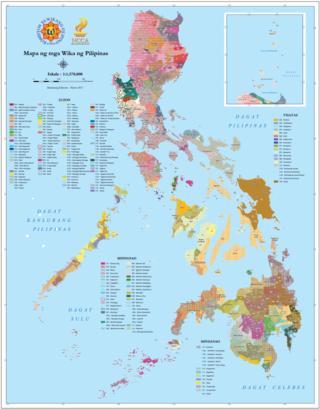
There are some 130 to 195 languages spoken in the Philippines, depending on the method of classification. Almost all are Malayo-Polynesian languages native to the archipelago. A number of Spanish-influenced creole varieties generally called Chavacano along with some local varieties of Chinese are also spoken in certain communities. The 1987 constitution designates Filipino, a standardized version of Tagalog, as the national language and an official language along with English. Filipino is regulated by Commission on the Filipino Language and serves as a lingua franca used by Filipinos of various ethnolinguistic backgrounds.

Chavacano or Chabacano is a group of Spanish-based creole language varieties spoken in the Philippines. The variety spoken in Zamboanga City, located in the southern Philippine island group of Mindanao, has the highest concentration of speakers. Other currently existing varieties are found in Cavite City and Ternate, located in the Cavite province on the island of Luzon. Chavacano is the only Spanish-based creole in Asia. The 2020 Census of Population and Housing counted 106,000 households generally speaking Chavacano.
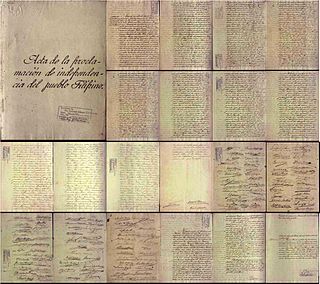
Spanish was the sole official language of the Philippines throughout its more than three centuries of Spanish rule, from the late 16th century to 1898, then a co-official language under its American rule, a status it retained after independence in 1946. Its status was initially removed in 1973 by a constitutional change, but after a few months it was once again designated an official language by a presidential decree. However, with the adoption of the present Constitution, in 1987, Spanish became designated as an auxiliary or "optional and voluntary language".

Hispanophone refers to anything related to the Spanish language.
A national language is a language that has some connection—de facto or de jure—with a nation. There is little consistency in the use of this term. One or more languages spoken as first languages in the territory of a country may be referred to informally or designated in legislation as national languages of the country. National languages are mentioned in over 150 world constitutions.
Official multilingualism is the policy adopted by some states of recognizing multiple languages as official and producing all official documents, and handling all correspondence and official dealings, including court procedure, in these languages. It is distinct from personal multilingualism, the capacity of a person to speak several languages.
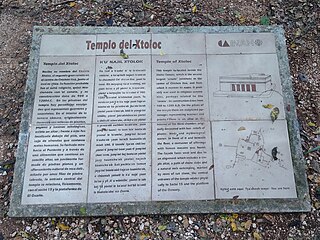
The Constitution of Mexico does not declare an official language; however, Spanish is the de facto national language spoken by over 99% of the population making it the largest Spanish speaking country in the world. Due to the cultural influence of the United States, American English is widely understood, especially in border states and tourist regions, with a hybridization of Spanglish spoken. The government also recognizes 63 indigenous languages spoken in their communities out of respect, including Nahuatl, Mayan, Mixtec, etc.

The historic and official language of Andorra is Catalan, a Romance language. Because of immigration, historical links, and close geographic proximity, Spanish and French are commonly spoken. There is a sizeable immigrant community that speaks Portuguese. Most Andorran residents can speak one or more of these, in addition to Catalan. Spanish was the most common mother tongue in Andorra according to mother tongue percentage statistics by the Andorran Government released in 2018. In 2022, Catalan became the most common mother tongue used by 55.2% of the Andorran population.

Spanish Filipino are an ethnic and a multilingualistic group native to the Philippines. They consist of Spaniards, Filipino mestizos, Spanish-speaking Filipinos, hispanicized Filipinos, and hispanic people from South America who are citizens of the Philippines or are descendants of the original European settlers who inter-married with native Filipinos during the Spanish colonial period. Many of their communities trace their ancestry to the early settlers from Spain and Latin America, and depending on the specific province in the Philippines, they formed as much as 19% in the capital city of Manila at formerly named Tondo province, and about 1.38% of the Ilocos region, 2.17% of Cebu or 16.72% of Bataan and other parts of the country.
Hispanicization refers to the process by which a place or person becomes influenced by Hispanic culture or a process of cultural and/or linguistic change in which something non-Hispanic becomes Hispanic. Hispanicization is illustrated by spoken Spanish, production and consumption of Hispanic food, Spanish language music, and participation in Hispanic festivals and holidays. In the former Spanish colonies, the term is also used in the narrow linguistic sense of the Spanish language replacing indigenous languages.
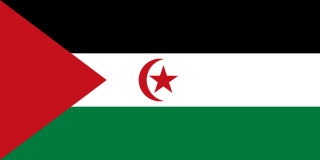
The Sahrawi Arab Democratic Republic, also known as the Sahrawi Republic and Western Sahara, is a partially recognized state, recognised by 46 UN member states and South Ossetia, located in the western Maghreb, which claims the non-self-governing territory of Western Sahara, but controls only the easternmost one-fifth of that territory. Between 1884 and 1975, Western Sahara was known as Spanish Sahara, a Spanish colony. The SADR is one of the two African states in which Spanish is a significant language, the other being Equatorial Guinea.
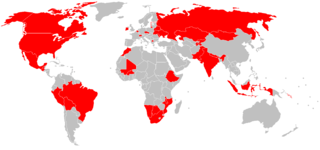
Many countries and national censuses currently enumerate or have previously enumerated their populations by languages, native language, home language, level of knowing language or a combination of these characteristics.













